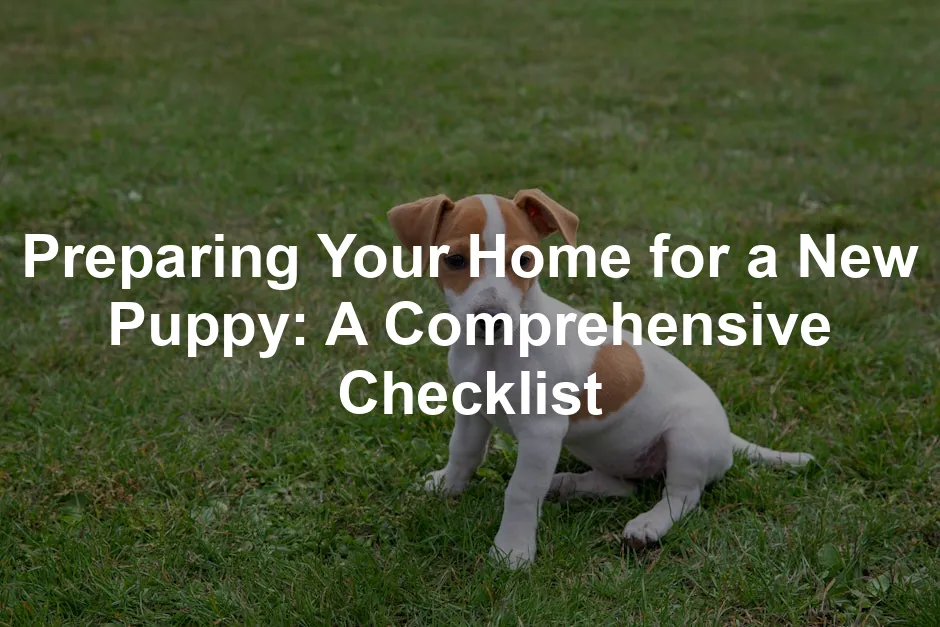Introduction
Welcoming a new puppy is like throwing a party every day! Your heart swells with joy as you envision the playful antics of your little furball. But before you dive headfirst into puppy cuddles, let’s hit the brakes for a second. Preparation is crucial to ensure a smooth transition for both your puppy and your home. A well-prepared environment reduces stress and sets the stage for a harmonious relationship with your new furry friend.
This article is packed with a comprehensive checklist designed to help you prepare your home for your new puppy. From puppy-proofing your space to gathering essential supplies, we’ve got you covered. So grab a cup of coffee (or dog treats) and let’s get your home ready for that adorable bundle of joy!
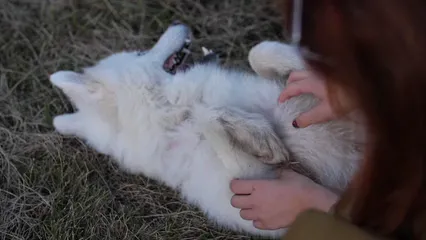
What to Consider Before Bringing a Puppy Home
Assessing Your Lifestyle
Before you rush to adopt a puppy, take a moment to evaluate your lifestyle. Puppies are delightful but require time, attention, and commitment. Ask yourself: Do I have enough time to devote to their needs? Puppies thrive on companionship and training, so if you work long hours, consider daycare options. Involving your family in the puppy care plan is essential. Discuss who will be responsible for feeding, walking, and training. Remember, raising a puppy is a team effort!
Choosing the Right Puppy
Selecting the right puppy is like picking the perfect avocado—one that fits your lifestyle is key! Research various breeds to find one that matches your energy levels and living situation. Some breeds are more active, while others are couch potatoes. Think about their temperament, size, and grooming needs. For instance, a hound may be perfect for outdoor adventures, while a toy breed might fit better in an apartment setting. Don’t forget—adopting from shelters and rescues is a fantastic option, too!
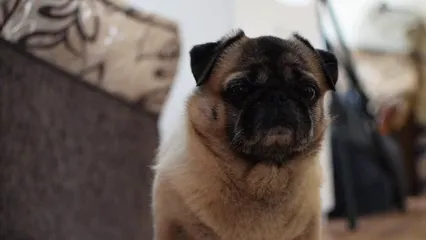
Budgeting for Your New Pet
Bringing a puppy into your life is like adding a sprinkle of joy to your daily routine. However, alongside the cuteness comes a range of costs that you need to budget for. Let’s break it down so you can prepare your wallet for the adventure ahead!
First off, food is a must. Depending on your puppy’s size and breed, you might spend around $30 to $70 monthly. Opt for high-quality puppy food to ensure they get the nutrients needed for healthy growth. Remember, this isn’t just any food; it’s the gourmet version for your little furball!
Next up are vet visits. Regular check-ups, vaccinations, and flea prevention can set you back about $200 to $600 in the first year alone. Don’t forget about spaying or neutering, which can range from $50 to $300, depending on your location. It’s essential to keep your pup healthy and happy, so factor in these costs!
Now, grooming. Some pups need regular grooming, while others are low-maintenance. Budget around $50 to $100 for grooming supplies if you’re doing it yourself. If you’re opting for professional grooming, that could be $30 to $90 per session, depending on the breed. A Dog Grooming Kit is a great investment to keep your puppy looking sharp!
Lastly, let’s not overlook the initial setup costs. Crates, beds, toys, leashes, collars, and training supplies can add up quickly. Expect to spend between $200 to $500 for these essentials. Puppy-proofing your home? That could mean buying baby gates for pet safety or securing hazardous items, costing another $50 to $150.
In summary, preparing for a puppy is an investment of both love and finances. It’s vital to budget wisely to ensure a joyous and stress-free experience for both you and your new furry friend!
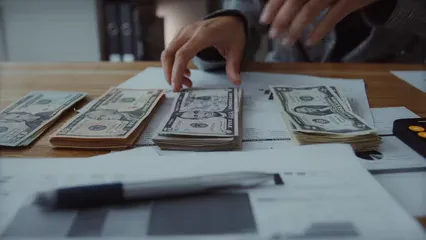
Preparing Your Home
Puppy-Proofing Your Space
Before your puppy arrives, you’ll want to transform your home into a safe haven. Puppies are curious creatures, and they love to explore. Here’s how to puppy-proof your space effectively:
1. Remove Harmful Items: Get rid of any toxic plants or chemicals. Common offenders include lilies, pothos, and cleaning supplies. Store these in cabinets with childproof locks.
2. Secure Electrical Cords: Puppies are notorious for chewing on cords. Use cord organizers or tape them to the wall to keep them out of reach.
3. Eliminate Choking Hazards: Small objects like coins, paperclips, and toys can pose severe choking risks. Conduct a sweep of your house, especially in lower areas.
4. Use Baby Gates: Block off areas that are off-limits. This will help prevent accidents and keep your pup safe from stairs or hazardous rooms.
5. Check Furniture Stability: Make sure furniture is stable. Puppies love to climb and explore, and unstable items can tip over.
6. Puppy-Proof Your Yard: If you have a yard, check for any poisonous plants, secure gaps in fencing, and remove any sharp tools or chemicals.
Here’s a handy checklist of items to remove or secure:
- Toxic plants
- Cleaning supplies
- Electrical cords
- Small objects
- Sharp tools
- Unstable furniture
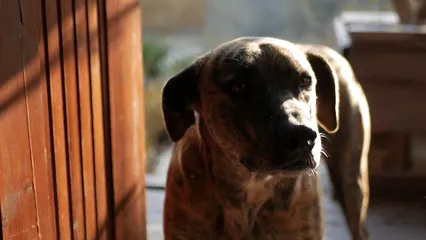
Creating a Safe Resting Area
Every puppy needs a cozy place to call home. Setting up a designated sleeping area is crucial for your puppy’s comfort and security. Here’s how to create that perfect spot:
1. Choose a Crate or Bed: Select a comfortable crate or bed that’s suitable for your puppy’s size. The crate should be spacious enough for your pup to stand up, turn around, and lie down comfortably.
2. Add Soft Bedding: Use soft, washable bedding to make the space inviting. You might also include a familiar blanket or toy to help them feel secure.
3. Designate a Quiet Space: Place the crate or bed in a quiet area of your home, away from high traffic. This will give your puppy a retreat when they need a break from the excitement.
4. Establish a Routine: Introduce your puppy to their resting area gradually. Use positive reinforcement to encourage them to go there, especially during nap times or after play sessions.
A well-prepared resting area not only helps your puppy feel safe and secure but also aids in their adjustment to their new environment. Remember, a happy puppy leads to a happy home!
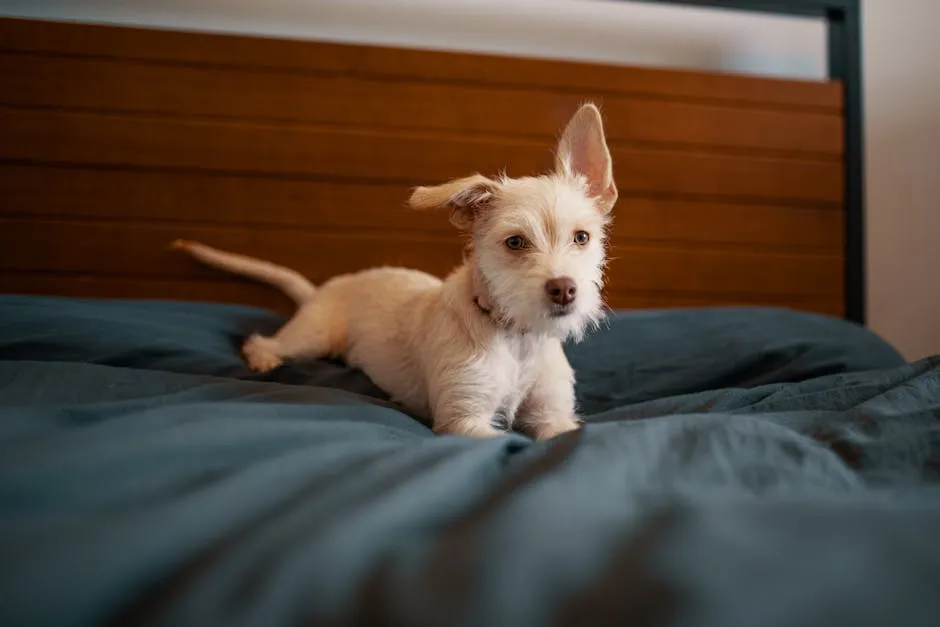
Establishing Eating and Bathroom Areas
Creating the perfect eating and bathroom zones for your new puppy is essential for a seamless transition. First, designate a specific area for meals. This space should be quiet and away from high-traffic areas. Puppies thrive on routine, so consistency is key!
Invest in sturdy, non-tip food and water bowls. Stainless steel bowls are a great option since they’re easy to clean and won’t harbor bacteria. When it comes to food, choose a high-quality puppy food appropriate for your pup’s age and size. Don’t forget to follow a feeding schedule! Puppies typically need to eat three to four times a day. This will help regulate their bathroom habits as well.
Potty training is another critical aspect of your puppy’s early days. To set up an effective potty area, take your puppy outside frequently, especially after meals and playtime. Consider using puppy pads for indoor potty training as a temporary solution. They can be a lifesaver for apartment dwellers or during inclement weather. For effective potty training, you can refer to the Best practices for potty training puppies in apartments.
For effective tips on potty training, check out the Best practices for potty training puppies in apartments.
Crate training can also aid in potty training. Dogs instinctively avoid soiling their sleeping area, so a crate can help teach your puppy to hold it until they’re outside. Make the crate a cozy space with soft bedding and toys. Use treats and positive reinforcement to encourage your puppy to go in willingly.
For accidents, be patient! Clean up messes promptly with an enzyme cleaner for pet messes to eliminate odors and discourage repeat offenses. Consistency and positive reinforcement will make the potty training process smoother for both of you.
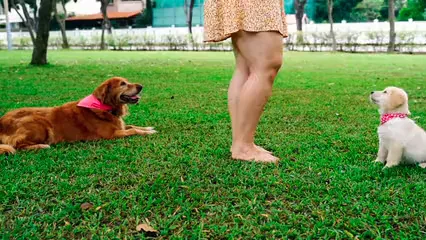
Setting Boundaries
Establishing boundaries is crucial for a well-behaved puppy. From day one, set clear rules about where your puppy can go and what they can do. Consistency is key here! Everyone in the household should be on the same page to avoid confusing your furry friend.
Using baby gates is an excellent way to create safe spaces and limit your puppy’s access to certain areas. This can prevent accidents and protect your belongings from enthusiastic chewing. Place gates in doorways or at the top of stairs to keep your pup safe.
Additionally, consider creating “no-go zones” where your puppy is not allowed. For instance, if you don’t want them on the couch or in the kitchen, make sure to enforce those rules from the start. Use positive reinforcement when they respect the boundaries you’ve set.
Don’t forget to involve the entire family in the training process! Teaching your puppy the house rules can be a fun activity that promotes bonding and teamwork. Consistent training will lead to a well-adjusted puppy who knows what is expected of them.
Setting boundaries helps create a secure environment for your puppy. A structured home leads to a happier, healthier pup. So, be the firm but loving leader your puppy needs, and enjoy the delightful journey ahead!
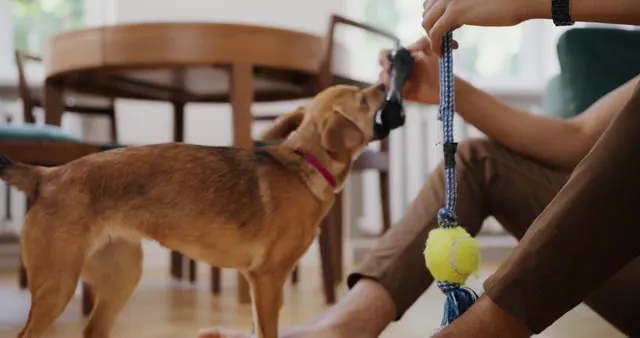
Comfort Items
When your new puppy arrives, creating a cozy sanctuary is essential. This helps them feel secure and relaxed in their new environment. Start with a comfy dog bed with a washable cover or a warm crate. A soft, washable blanket can add an extra touch of comfort. Puppies thrive when they have a designated resting space.
Toys are equally important! They keep your pup entertained and help with teething. Consider durable chew toys to satisfy their instinct to gnaw. Interactive toys, like treat-dispensing puzzles, can keep their minds sharp and engaged. Remember, a happy puppy is a busy puppy!
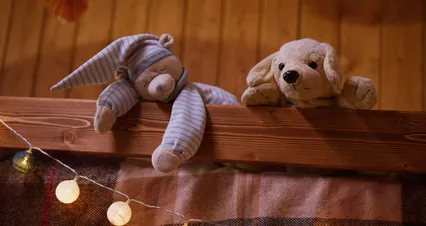
Grooming Essentials
Keeping your puppy looking sharp and healthy requires some grooming supplies. Start with a good brush suited for your puppy’s coat type. Regular brushing minimizes shedding and keeps their coat shiny. Nail clippers are crucial, too; keeping nails trimmed prevents scratches and injuries, both for your pup and your furniture.
Don’t forget shampoo! A gentle puppy shampoo is essential for keeping their coat clean without irritating their skin. Most importantly, early dental care is vital. Introduce your puppy to dog toothbrush and toothpaste to prevent dental issues down the line. Establishing a dental routine early sets the stage for a lifetime of healthy teeth!
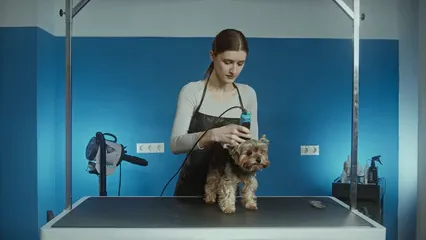
Training Supplies
Training your puppy is an exciting journey! You’ll need some essential supplies to set them up for success. Start with a sturdy collar with an ID tag and leash for walks. A harness can also be beneficial, especially for small breeds. Training treats are a must! Small, tasty morsels motivate your puppy during training sessions.
Consider enrolling in a puppy training class. Starting early helps your pup learn commands and social skills. Consistency is key, so everyone in the household should use the same commands. The earlier they start training, the better their behavior will be. Plus, it strengthens the bond between you and your furry friend!

Health and Safety Items
Your puppy’s safety and health come first! Microchipping is a crucial step to ensure they can be returned if lost. Make sure to also have identification tags on their collar with your contact information. This is a simple yet effective way to keep your puppy safe.
Have emergency contacts ready, including your veterinarian and poison control. Accidents can happen, so being prepared with numbers can save precious time in a crisis. Having these health and safety items in place ensures your new puppy’s well-being and gives you peace of mind as they explore their new home.
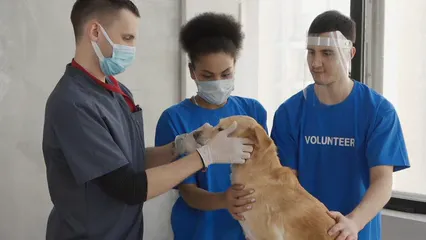
Bringing Your New Puppy Home
The First Day
Welcoming your puppy home is an exciting adventure! But wait, before you let the cuteness overwhelm you, let’s talk about how to introduce your puppy to their new digs. Start by limiting their exploration to one or two rooms. This helps prevent overstimulation and gives your pup time to adjust.
When they arrive, allow them to sniff around. This sets the stage for a comforting welcome. Remember, it’s a big world for such a small creature! Introduce family members one at a time. Give everyone a chance to bond with the puppy without overwhelming them.
If you have other pets, introduce them gradually. Keep the initial meetings short and supervised. This helps avoid territorial disputes and ensures everyone feels safe. A calm, gradual introduction lays the groundwork for a harmonious household.
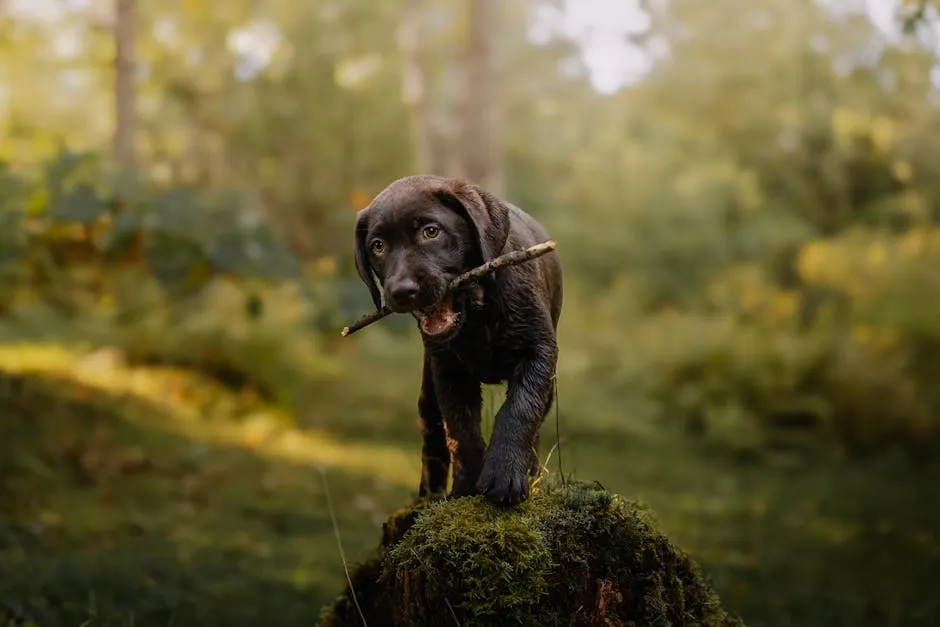
Establishing a Routine
Consistency is the name of the game! Puppies thrive on routine, so create a daily schedule for feeding, playtime, and potty breaks. This not only helps your pup understand what to expect but also aids in house training.
Start with regular meal times. Puppies typically need to eat three to four times a day. After meals, take them outside for potty breaks. This reinforces good habits and helps prevent accidents indoors.
Incorporate playtime into your schedule, too! Short bursts of play help burn off excess energy. Plus, it’s a great way to bond. Establishing a routine will give your puppy a sense of security. And trust me, a secure puppy is a happy puppy!
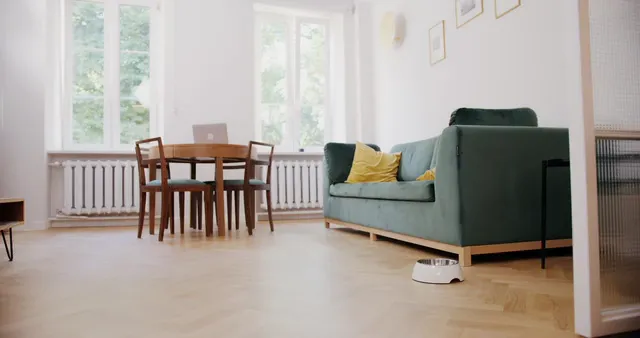
Socializing Your Puppy
The importance of early socialization cannot be overstated. It’s crucial for raising a well-adjusted dog. Start introducing your puppy to new experiences right away. Take them for car rides, strolls in the park, or visits to pet-friendly stores.
Puppy classes are another fantastic way to socialize. These classes provide structured environments where your pup can meet other dogs and people. They also learn essential commands and manners. Look for classes that use positive reinforcement methods.
Playdates with other vaccinated dogs can also work wonders. Just remember, keep things controlled and positive. Gradually exposing your puppy to various sights, sounds, and smells helps them grow into a confident canine.
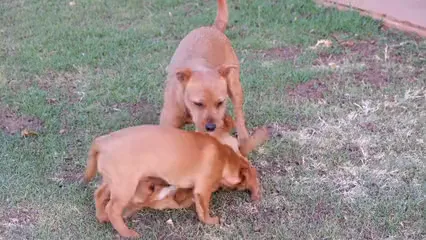
FAQs
What should I do if my puppy is anxious in the new home?
If your puppy seems anxious, creating a safe space can work wonders. Set up a cozy corner with their bed and toys. This gives them a retreat when they need it. Calming products like pheromone diffusers can also help ease their nerves.
How can I introduce my puppy to other pets?
Start by keeping the initial introductions short and supervised. Use a leash for control and allow them to sniff each other. Monitor body language closely. If either pet seems stressed, separate them and try again later. Patience is key!
What vaccinations does my puppy need?
Puppies need a series of vaccinations to protect them against diseases. Common vaccines include distemper, parvovirus, and rabies. Discuss with your vet about the recommended vaccination schedule and ensure your puppy is on track.
How long should I expect it to take for my puppy to adjust?
Each puppy is unique! Generally, it may take a few days to a few weeks for your pup to adjust. Look for signs of comfort, like exploring their surroundings and engaging in play. Be patient and supportive during this transition.
What if my puppy has accidents in the house?
Accidents happen! When they do, don’t scold your puppy. Instead, clean up messes promptly with an enzyme cleaner to eliminate odors. Reinforce potty training by taking them outside frequently and rewarding them for going in the right spot. Consistency and patience will lead to success!
Please let us know what you think about our content by leaving a comment down below!
Thank you for reading till here 🙂
All images from Pexels

